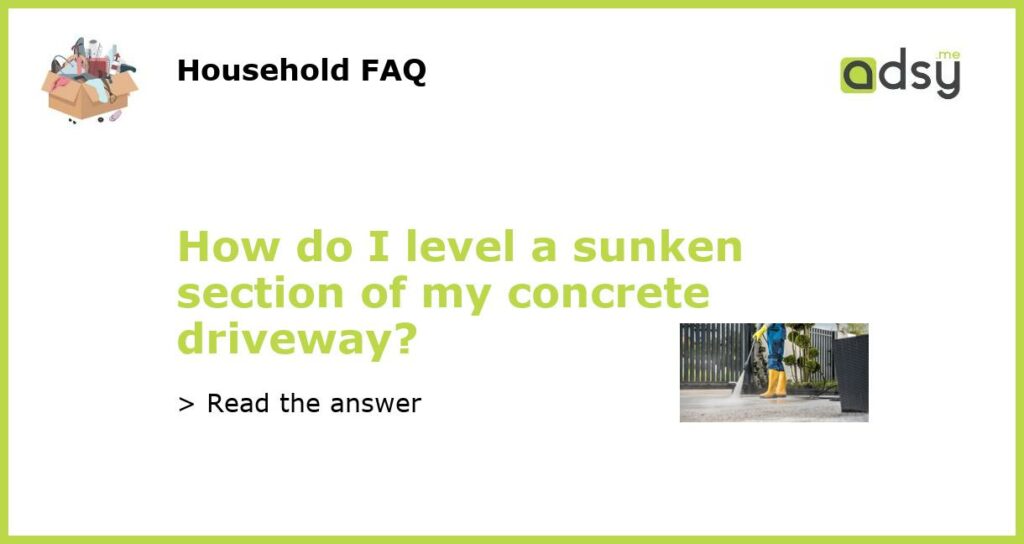Assess the damage
If you have a sunken section in your concrete driveway, the first step is to assess the extent of the damage. Look for any cracks, unevenness, or sinking in the affected area. Take note of the size and depth of the sunken section, as this will help determine the best course of action.
Determine the cause of the sinking
In order to effectively level a sunken section of your concrete driveway, it’s important to understand the underlying cause of the sinking. Common reasons for driveway sinking include poor soil compaction, water erosion, and compromised foundation due to tree roots or structural damage. Identifying the cause will help you choose the most appropriate solution.
Reinforce the area
Before you can level the sunken section of your driveway, it’s essential to reinforce the area to prevent further sinking in the future. This can be done by adding additional support to the subbase or subgrade. One common method is to use a layer of compacted gravel as a stable base for the concrete. This will help distribute weight more evenly and reduce the risk of future sinking.
Lift and level the driveway
Once the area is reinforced, you can begin the process of lifting and leveling the sunken section of your driveway. There are several methods for doing this, including mudjacking, slabjacking, and polyurethane foam injection. These techniques involve injecting a material beneath the sunken slab to raise it to the desired level. The specific method will depend on the extent of the damage and your budget.
Finish and maintain the repaired section
After you have successfully leveled the sunken section of your concrete driveway, it’s important to finish and maintain the repaired area. This may involve patching any cracks or imperfections with concrete filler and sealing the entire surface to protect it from future damage. Regular maintenance, such as cleaning and sealing, will help extend the lifespan of your driveway and prevent further sinking.

